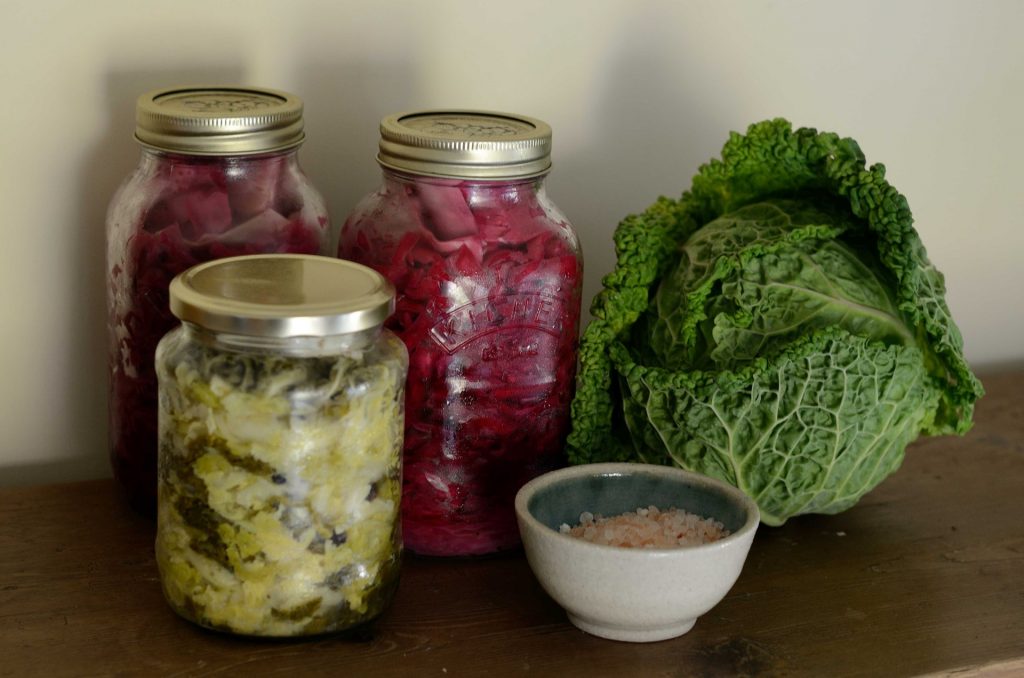Creating a healthy gut
Kefir -
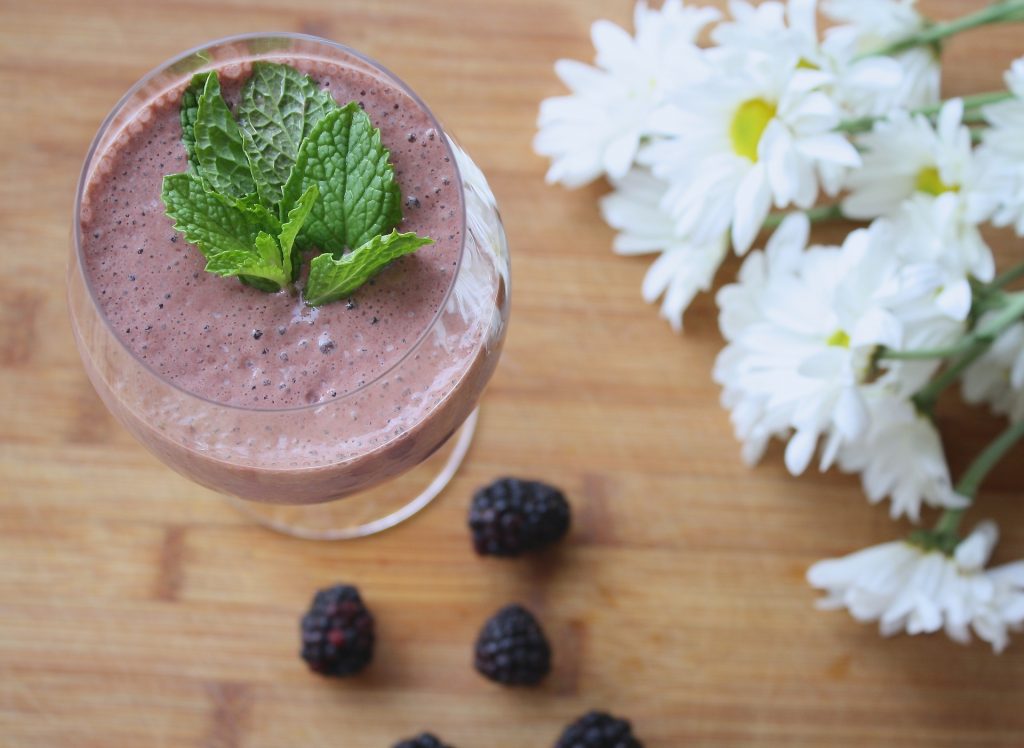
Kefir is a cultured, enzyme-rich yogurt-style drink, which is filled with beneficial micro-organisms also known as probiotics, also containing healthy yeast. The naturally occurring bacteria and yeast in kefir combine symbiotically to offer excellent health benefits helping to balance your “inner ecosystem”. Kefir has an abundant source of vitamins and minerals with easily digestible proteins and amino acids, making it more nutritious than yogurt, and helping the body to heal and support functions. Kefir is known to have a relaxing effect on the nervous system, so aids sleep as well as reducing depressive symptoms chronic fatigue, herpes outbreak, and ADHD symptoms. It also promotes healthy cell growth to increase energy and relieve skin disorders, as well as being an excellent source of B Vitamins – so this is awesome if you are vegan (look for water kefir as opposed to dairy kefir) or vegetarian! Other health benefits include relieving intestinal and digestive disorders by assisting with bowel movements if experiencing constipation, flatulence reduction, and elimination of cravings by nourishing the body properly. Kefir is also very beneficial following antibiotic therapy to restore your inner eco-system.
Lactose Intolerant?
No problem, kefir’s job is to produce lactase from the yeast and bacteria. Lactase is an enzyme which “eats” most of the lactose after culturing is complete.
Basic (Non Vegan) Kefir Recipe:
- Box of Kefir Starter Pack (Yogourmet) (See health food store listings).
- 2 litre carton of Homogenized milk (do not use Lactose free milk).
- Bring the entire carton of milk to a boil in a large pot.
- Wait until the milk cools.
- Add 2 sachets of the kefir starter to the milk (check ingredients if not using Yogourmet).
- Mix well.
- Pour mixture into 2 large glass mason jars.
- Put the lids on and leave on the kitchen counter for 24 hours.
- Refrigerate and enjoy!
- Start off with small amounts and increase over time, as it can cause some loose stools and bloating until your body gets used to the healthy cleaning of your gut.
- Add to smoothies – blueberry, strawberry, banana. Or make kefir ice cream. Your kids will love them and the possibilities are endless!
- Pinterest has some fantastic ideas you can check out.
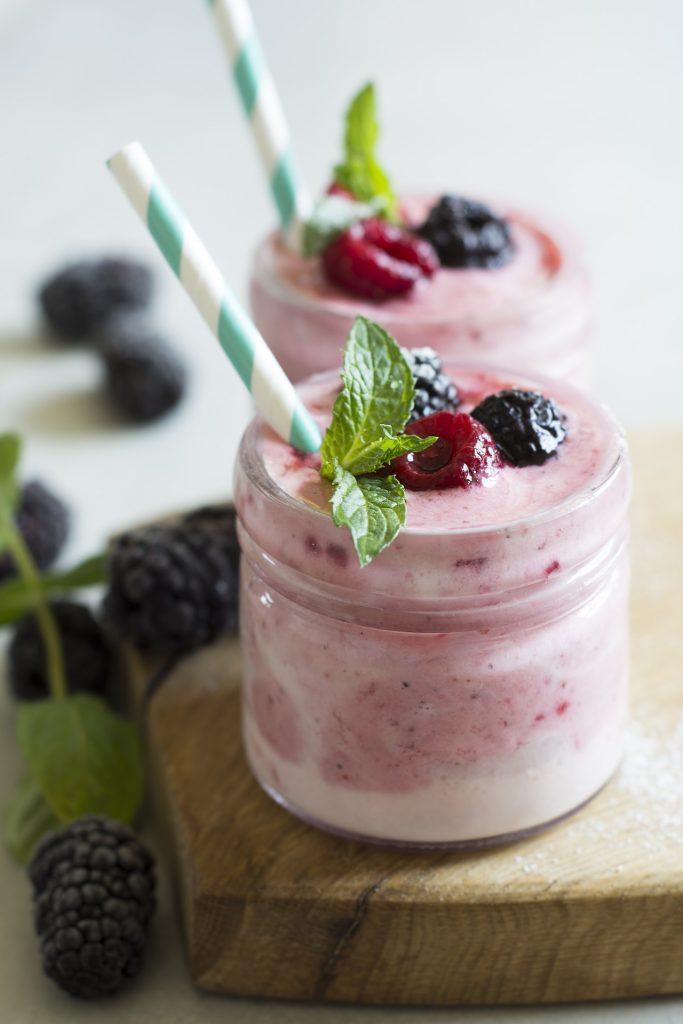
Tips:
If your Kefir is too runny after leaving for 24 hours, leave a little while longer and check back. It should be the same consistency as yogurt.
Cow, goat and sheep’s milk can be used. Do not use Lactose free milk. Coconut, soy and rice are also options, but the process is different and you must add kefir grains or probiotics as opposed to using “Yogourmet” brand starter.
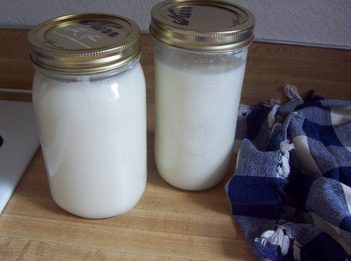
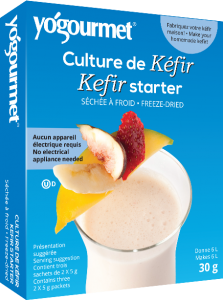
Kombucha -
Kombucha is an ancient Chinese drink that’s been around for 2,000 years and has been said to prevent and fight cancer, arthritis, and other degenerative diseases. In the first half of the 20th Century, scientific research was done on health benefits and whether it really did reduce cancer in Russia and Germany. Russian scientists discovered that entire regions of their country were immune to cancer and said that Kombucha had been the root cause of this. German scientists then decided to continue with this research. In the 1900’s, the USA began to do some studies on Kombucha, but today there are no major medical studies to back up this research. This is because drug companies in Canada and the USA will not profit from a “cure” that is found so easily and cheap to make, when they can benefit from the profits of an expensive drug they are selling to us!
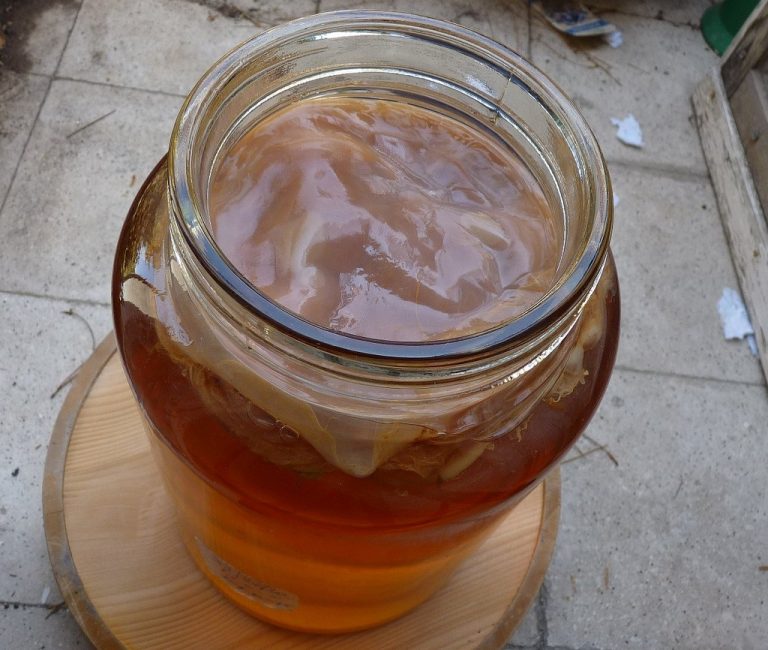
Research so far...
There has been lots of research done on many of the nutrients and acids Kombucha contains in large quantities like B-vitamins, antioxidants (good for your immune system) and Glucaric Acid (helps prevent cancer).
Kombucha is also known to aid digestion, improve gut health, maximize absorption of nutrients, detoxify the liver, decrease joint pain caused by arthritis, increase energy levels, fight candida (yeast) overgrowth, improve mood including depression and anxiety.
Safety in pregnancy and breastfeeding:
Due to the limited amount of research and an ongoing debate about whether Kombucha is safe to drink in pregnancy or while nursing, we are unable to recommend drinking Kombucha, especially during pregnancy. Kombucha contains a small amount of alcohol – estimated to be around >0.5% in home brews and 1-3% in store bought brews. Fetal Alcohol Syndrome can be detrimental to your babies growth and development in the womb, and it is unknown how much alcohol is required to cause FAS.
If you decide to continue drinking Kombucha during pregnancy, store bought brews may be a safer option as these are regularized by the manufacturers. Some brands will be pasteurized.
If you are planning to breastfeed, you can begin consuming Kombucha following your birth as current research no longer recommends “pumping and dumping” following having a few alcoholic beverages. Given that Kombucha has extremely minimal amounts of alcohol, the percentage of this being transferred through in the breast milk is very minimal.
Cautions:
If it is the first time trying Kombucha, we recommend going slowly and drinking in small amounts 2-4oz per day.
- For some, Kombucha can cause headaches, itching, muscle cramps and diarrhea as it cleanses the toxins from the body. Once you get used to drinking the Kombucha, you can slowly build your body up to drinking more each day.
- If you are breastfeeding and have made a safe home brew, be cautious. A safe home brew is one that is not overly acidic – you can do this by smell and taste, but you can also buy inexpensive PH testing strips to make sure your brew is between PH levels 2.3-3.0.
- Keep well hydrated as Kombucha is a detoxing agent; toxins will leave your body in your urine and stools. If you are dehydrated, it will come out in your breast milk which can cause your baby to have an upset stomach.
- As Kombucha naturally boosts your energy, you may find your baby also has more energy. If you don’t think your baby needs to be more energetic – do not drink it, you can get your probiotics from drinking kefir instead.
- It can also cause loose stools in both you and your baby. If your baby develops loose stools or diarrhea, stop drinking Kombucha for a few days and resume slowly.
- Some people notice very little side effects in their baby, however, and see the benefits of a healthy baby and boosted immune system.
- More information can be found here – https://www.kombuchakamp.com/kombucha-tea-pregnancy-safety-probiotics-fermented-foods.
Kombucha Fermenting containers, jars, and breathable covers:
- Only use clear glass when fermenting (and storing) as Kombucha will detoxify its container. Avoid using plastic, pottery or ceramic.
- For your breathable cover, use either a cheese cloth, coffee filter or paper towel – enough to allow your Kombucha to breathe but not to let any bugs or debris in.
- Follow the NO METAL rule! Do not touch your scoby with anything metal, as it will harm it.
Acquiring a scoby:
A Scoby is an acronym for “Symbiotic Culture of Bacteria and Yeast”. A scoby is a living home for the bacteria and yeast that transforms sweet tea into tangy, fizzy Kombucha. The scoby also seals off the fermenting Kombucha to the air and protects it from the outside. The best way to acquire a scoby is to ask a friend who brews…or find instructions on making one from a pre-bought bottle from the supermarket (although this method will take longer).
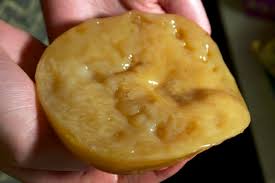

How to make home brewed kombucha:
- Firstly boil 8 cups of distilled water, (or adjust ratios to the size of your container).
- Once boiled, add 5 bags of black tea or a mixture of green and black tea bags…then steep for 5 minutes.
- Add 1 cup of granulated white sugar and mix well until dissolved.
- Remove the tea bags and let your tea cool with a lid over your pot, this may take a few hours!
- Once the tea is cool, pour your tea into its container and add your scoby.
- Cover with a cheese cloth and secure with an elastic band.
- Set to one side in a dark spot where light will not be able to penetrate your container.
- 1st Fermentation – is usually ready around 1.5-2 weeks depending on how warm the temperature of your house is. Warmer = quicker, colder = slower. Longer fermenations make stronger, more vinegary tasting tea. During fermentation, you may notice a vinegary smell.
- Once your batch is ready, you can remove the scoby. Take your Kombucha “mother scoby” out and pull the baby gently from the mother by using your fingers to separate around the edges. Place your mom and baby scoby in a glass mason jar, and fill the jar with your tea until all of the scoby is covered. Place the mason jar in the fridge so it will become dormant. Never forget to leave them in tea or they will die.
- You can put your remaining tea in the fridge or begin second fermentation which involves flavouring your tea by adding fruit juice, fresh fruit, lime juice, ginger tea, blueberry tea or any other flavours you can imagine! For secondary fermentation, you must leave it two more days to ferment in glass jars. NEVER ADD HONEY – it can cause infant botulism (a serious condition causing breathing problems and muscle weakness).
- Kombucha tea will be good for about 30 days. 1-4oz per day is recommended, then build up to 4-8oz. Never drink more than 32oz per day MAX.
- Once you get going, you can make a scoby hotel with all of your new babies and pass them onto your friends!
- Clean all of your “tools” with a mixture of vinegar and water.
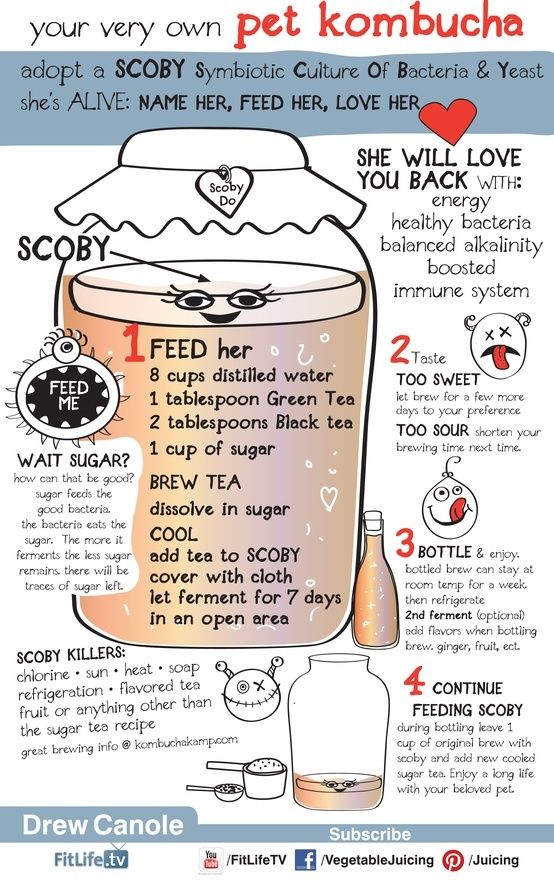
Do I have Mold?
If your scoby is wet, slimy bubbly, etc or under the surface of the tea, it’s not moldy. However, a mold spot resembles the mold you would find on a piece of bread – green, pink, grey and is dry, powdery, fuzzy, spiny or hairy in look. If you get mold, throw your scoby away, and start over. Do not drink the tea from that batch.
Fermented Veggies -
Fermenting vegetables begins with lacto-fermentation, a process used to preserve foods that naturally enhance the nutrient content of foods. The bacteria allows minerals to be more readily available in the body, as well as producing enzymes and vitamins for beneficial digestion. Almost all vegetables can be fermented, allowing us to preserve nutritious meals all year around.
There are many varieties of cultured foods such as cultured veggies (such as sauerkraut, kimchi, beets), chutneys, condiments (like salsa and mayonnaise), cultured dairy (such as yogurt, kefir and sour cream), and fish (such as mackerel and swedish gravlax).
Many recipes can be found online including where to acquire a culture starter pack or fermentation equipment to ensure you are safe to be making your own fermented produce.
